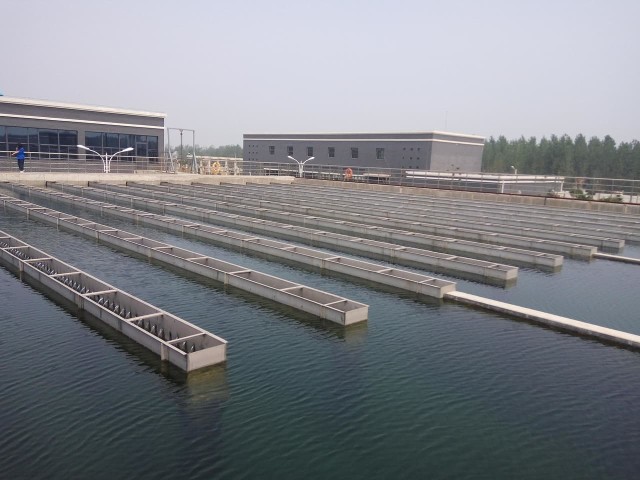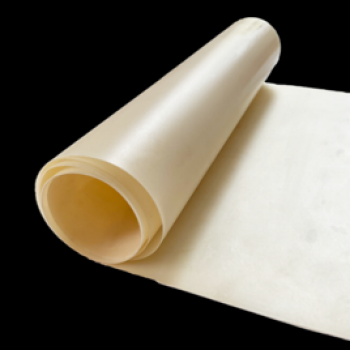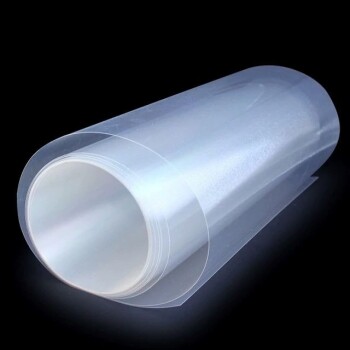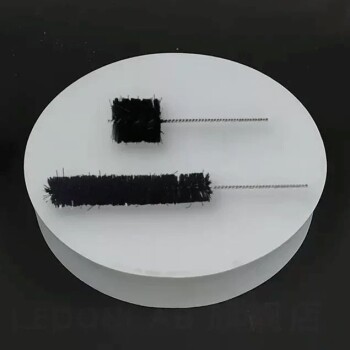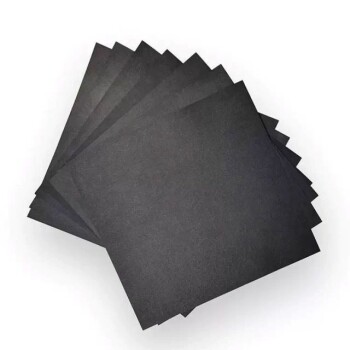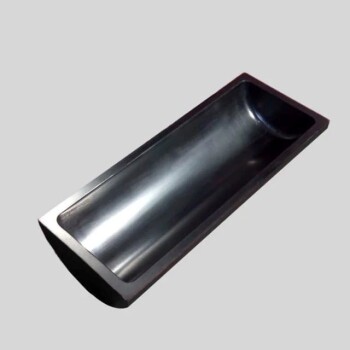Activated carbon, also known as activated charcoal, is a highly porous material that is produced from a variety of raw materials, including wood, coconut shells, and coal. It is processed through a series of chemical and thermal treatments to create a highly porous and adsorbent material that is able to effectively remove contaminants and impurities from liquids and gases.
In water treatment, activated carbon is often used as a means of removing unwanted contaminants, such as chlorine, chloramines, and organic matter, from drinking water and wastewater. It is also commonly used to remove unwanted odors and tastes, as well as to control the growth of microorganisms in water.
One of the main advantages of using activated carbon in water treatment is its ability to effectively remove a wide range of contaminants, including both dissolved and particulate matter. This makes it an effective tool for a variety of water treatment applications, including the purification of drinking water, the treatment of industrial wastewater, and the removal of contaminants from municipal water for process use.
Despite its effectiveness, activated carbon does have some limitations. It is important to properly maintain and regenerate activated carbon in order to ensure its continued effectiveness in water treatment. This may involve using chemical or thermal regeneration techniques to remove contaminants from the carbon and restore its absorption capacity.
Overall, activated carbon is a powerful and versatile tool that is widely used in water treatment efforts around the world. Its ability to effectively remove a wide range of contaminants makes it an invaluable resource for ensuring the quality and purity of our water supply.
About activated carbon
The process of activating carbon involves the removal of impurities and other non-carbon atoms from the raw material, which leaves behind a highly porous and adsorbent material. This porous structure gives activated carbon its unique properties, such as a large surface area and a high degree of microporosity.
The large surface area of activated carbon allows it to adsorb a wide range of materials, including gases, liquids, and dissolved contaminants. The microporosity of activated carbon allows it to capture small molecules and contaminants that would otherwise pass through other filtration media.
Activated carbon is used in a wide range of applications, including water treatment, air purification, and decaffeination. In water treatment, it is commonly used to remove contaminants such as chlorine, chloramines, and organic matter. In air purification, it is used to remove volatile organic compounds (VOCs) and other gases from the air. In decaffeination, it is used to remove caffeine from coffee beans.
Types of activated carbon
Granular activated carbon (GAC) is a form of activated carbon that is characterized by its small, bead-like particles. It is often made from bituminous coal, although it can also be produced from other carbonaceous materials such as wood or coconut husks. GAC is widely used in water treatment applications due to its high surface area and ability to remove a wide range of contaminants, including dissolved organic matter, chlorine, and chloramines.
One of the main advantages of GAC is its ability to filter a large volume of water in a relatively short amount of time. It is often used in whole house filtration systems, point-of-use filters, and industrial water treatment systems.
Powdered activated carbon (PAC) is another form of activated carbon that is commonly used in water treatment applications. It is finer and more abrasive than GAC, which makes it more effective at removing smaller contaminants. It is often used in smaller water treatment systems, such as those used in the food and beverage industry, as well as in larger-scale treatment facilities.
Extruded activated carbon (EAC) is a form of activated carbon that is produced by binding together activated carbon particles with a binder, such as starch or a synthetic polymer. It is often used in water treatment applications due to its high surface area and ability to remove a wide range of contaminants.
Liquid activated carbon (LAC) is a form of activated carbon that is suspended in a liquid carrier, such as water or a solvent. It is often used in water treatment applications due to its ability to remove a wide range of contaminants and its ease of use.
Overall, the type of activated carbon used in a water treatment application will depend on the specific contaminants being removed and the desired level of purification. It is important to select the appropriate form of activated carbon to ensure the effectiveness and efficiency of the treatment process.
Water Treatment Using Activated Carbon
Activated carbon is a highly porous, solid material that is widely used in water treatment to remove contaminants and impurities from water. It is an effective tool for removing a wide range of contaminants, including dissolved organic matter, chlorine, chloramines, and other dissolved contaminants.
Activated carbon is commonly used in municipal water treatment facilities to purify drinking water for human consumption. It is also used in industrial water treatment facilities to purify water for process use and to treat wastewater before it is released back into the environment.
In addition to its use in large-scale water treatment facilities, activated carbon is also commonly used in smaller point-of-use water treatment systems, such as whole house filtration systems and under-sink filters. These systems are designed to remove contaminants from the water at the point of use, ensuring that the water that is used for drinking, bathing, and other purposes is of high quality.
Drinking water treatment
Activated carbon is an essential tool in the treatment of drinking water. Its ability to remove a wide range of contaminants, including pesticides, endocrine disruptors, and pharmaceutical products, makes it an effective means of ensuring that drinking water is safe for consumption.
In addition to its ability to remove contaminants, activated carbon is also used in drinking water treatment to control tastes and odors. It is effective at removing compounds that contribute to undesirable tastes and odors, which helps to improve the overall quality of the water.
One of the more recent uses of activated carbon in drinking water treatment has been in the control of disinfectant by-products (DBPs). DBPs are formed when the disinfectants used to treat water combine with natural organic matter (NOM) present in the water, resulting in harmful by-products. Activated carbon is effective at removing the NOM that serves as the precursor to DBPs, helping to control the formation of these harmful compounds.
Overall, the use of activated carbon in drinking water treatment helps to ensure that the water we consume is safe, tastes and smells good, and is free of harmful contaminants and by-products.
Wastewater treatment
In wastewater treatment facilities, activated carbon is used to remove a wide range of contaminants from the effluent that is discharged into waterways or reused. These contaminants can include pesticides, fuels, solvents, and other harmful substances that must be removed to protect the environment and ensure the safety of the water.
Activated carbon is effective at removing these contaminants due to its highly porous structure and large surface area, which allows it to adsorb and hold onto a wide range of materials. In wastewater treatment, activated carbon is often used in combination with other treatment technologies, such as chemical treatment and filtration, to ensure that the water is sufficiently purified for its intended use.
Process Water
Process water, or water that is used in industrial processes, must often meet strict quality requirements to ensure that it does not damage equipment or affect the quality of the final product. Activated carbon is often used in the treatment of process water to ensure that it meets these quality standards.
In the production of beverages and pharmaceutical products, for example, process water must be free of contaminants and impurities that could affect the quality of the final product. Activated carbon is an effective tool for removing a wide range of contaminants, including dissolved organic matter, chlorine, and other dissolved contaminants.
Activated carbon can be used in a variety of ways in the treatment of process water. It may be used alone, or in combination with other treatment technologies, such as UV disinfection and particulate filtration systems. The specific treatment approach will depend on the contaminants present in the water and the desired level of purification.
Other uses
Activated carbon is not only used in large-scale water treatment facilities, but it can also be utilized in small-scale and point-of-use applications. Some examples of these types of applications include:
Aquarium and pond filtering: Activated carbon helps to keep aquatic environments clean and free of contaminants that could harm the inhabitants.
In-home filters: Many types of in-home water filters, such as those found in refrigerators or that can be attached to faucets, use activated carbon to purify the water.
Activated Carbon Regeneration
Activated carbon regeneration is the process of removing contaminants and impurities from used activated carbon so that it can be reused.
Over time, activated carbon becomes saturated with contaminants and loses its ability to effectively remove impurities. When this happens, it must be regenerated to restore its adsorption capacity. There are several methods of activated carbon regeneration, including chemical regeneration, thermal regeneration, and biological regeneration.
The specific method of regeneration used will depend on the type of contaminants being removed and the characteristics of the activated carbon. Chemical regeneration involves the use of chemicals to remove contaminants from the carbon, while thermal regeneration involves the use of heat to remove contaminants. Biological regeneration involves the use of microorganisms to break down contaminants on the surface of the activated carbon.
The main advantage of activated carbon regeneration is that it allows for the reuse of activated carbon, reducing the need for new material and conserving resources. It also helps to extend the lifespan of activated carbon, reducing the cost of replacing it. Additionally, activated carbon regeneration helps to reduce waste and can contribute to sustainability efforts.
CONCLUSION
In conclusion, water is an essential resource that is vital to the survival and prosperity of humanity. As the world's population continues to grow, it becomes increasingly important to efficiently treat and manage existing water resources. Activated carbon is a powerful tool that is widely used in water treatment facilities to ensure that water is safe for consumption, to protect waterways from harmful contaminants, and to produce high-quality products.
Kindle Tech offers custom rotary kilns that are used in the production and regeneration of activated carbon for a variety of industries, including the water treatment industry. If you are interested in learning more about our activated carbon rotary kilns, please do not hesitate to contact us.
Related Products
- Electric Rotary Kiln Small Rotary Furnace for Activated Carbon Regeneration
- Wall Mounted Water Distillation Unit
- HFCVD Machine System Equipment for Drawing Die Nano-Diamond Coating
- Anion Exchange Membrane for Laboratory Use
- Proton Exchange Membrane for Batteries Lab Applications
Related Articles
- Electric Rotary Kiln Pyrolysis Furnace: Design, Operation, and Applications
- What is activated carbon regeneration Rotary Furnace
- Rotary Furnaces: A Comprehensive Guide to Advanced Materials Processing
- Comprehensive Guide to Muffle Furnaces: Applications, Types, and Maintenance
- 6 Ways To activated carbon regeneration
